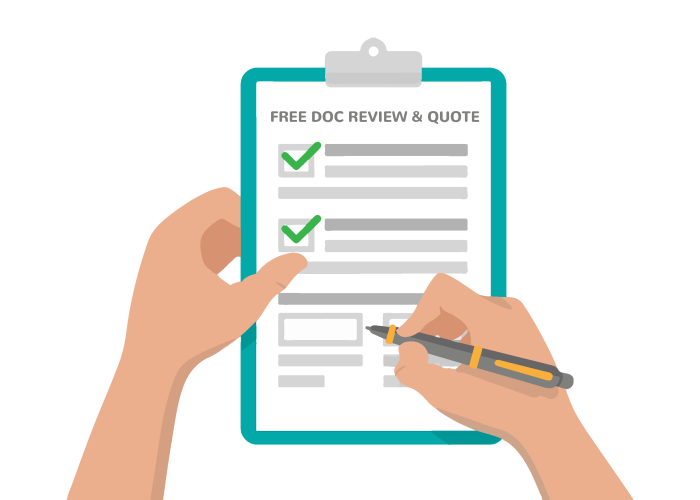Ensuring that PDFs are accessible is more than a legal requirement—it should align with the values that higher education institutions champion. Yet, achieving this goal can be complex, with content creators scattered across departments and varying levels of awareness about accessibility best practices. Overlooking PDF accessibility risks excluding students, faculty, and staff with disabilities from vital information, undermining the very principles of inclusion that higher education seeks to uphold.
By addressing this gap, colleges and universities not only reaffirm their leadership in accessibility but also set a powerful example for other organizations. Making PDFs accessible is a critical step in ensuring that higher education remains a space where innovation, equality, and opportunity are accessible to all.
The Critical Role of PDFs in Higher Education
PDFs are ubiquitous in higher education. They are the default format for a wide range of materials, including:
- Syllabi and course materials
- Research papers and journal articles
- Admissions and financial aid information
- Campus maps and event programs
- Annual reports and strategic plans
Their versatility and ability to preserve formatting across devices make PDFs a convenient choice for distributing information. However, without proper accessibility measures, PDFs can present significant barriers for students, staff, and faculty with disabilities, especially those who rely on assistive technologies like screen readers.
Legal Imperatives
Colleges and universities are bound by laws that mandate digital accessibility, including the Americans with Disabilities Act (ADA) and Sections 504 and 508 of the Rehabilitation Act. These laws require educational institutions to ensure equal access to information and services for individuals with disabilities. Non-compliance can lead to lawsuits, fines, and reputational damage, as several high-profile cases in recent years have demonstrated.
The Benefits of Accessible PDFs
1. Improved Usability for All
Accessible PDFs aren’t just beneficial for individuals with disabilities—they improve the user experience for everyone. Features like searchable text, proper tagging, and logical navigation make it easier for users to interact with documents, regardless of their preferred device or level of digital proficiency.
2. Support for Student Success
Accessibility directly impacts student outcomes. Students who encounter barriers to accessing course materials may struggle to keep up with their peers, leading to increased dropout rates and lower academic performance. Providing accessible PDFs ensures that all students have an equal opportunity to succeed.
3. Reputation as a Forward-Thinking Institution
By prioritizing accessibility, colleges and universities position themselves as leaders in innovation and social responsibility. This proactive approach demonstrates a commitment to fostering an inclusive environment, which can attract a more diverse student body and faculty while enhancing the institution’s reputation among peers and stakeholders.
4. Streamlined Processes and Cost Savings
Investing in accessibility upfront can save time and money in the long run. Retroactively remediating inaccessible PDFs is labor-intensive and costly. By integrating accessibility into document creation workflows, universities can avoid these pitfalls while maintaining compliance with accessibility standards.
Steps to Achieving PDF Accessibility
Implementing accessible PDFs requires a strategic approach, but the process can be streamlined with the right tools and practices. Here are some key steps:
1. Train Staff and Faculty
Educating document creators about accessibility principles is essential. Training should cover topics such as using proper heading structures, adding alternative text to images, and tagging content appropriately.
2. Conduct Regular Audits
Periodic reviews of existing PDFs can identify accessibility gaps. These audits should assess whether documents are properly tagged, navigable, and compatible with assistive technologies.
3. Incorporate Accessibility into Procurement Policies
When purchasing or licensing software, colleges should require that vendors provide accessible documentation and support materials.
4. Create a Culture of Accessibility
Beyond technical fixes, fostering a culture that values accessibility is key. Leadership should emphasize its importance through policy changes, regular communication, and ongoing investments in accessibility initiatives.
Becoming a Leader Among Peers
Colleges and universities that prioritize PDF accessibility stand out as leaders in their field. They set a benchmark for inclusivity and innovation, inspiring peer institutions to follow suit.
Accessible PDFs also align with the broader goals of higher education. They facilitate collaboration with researchers, enable global access to academic work, and empower students to reach their full potential. In a competitive landscape, being recognized as an institution that values accessibility can enhance recruitment efforts, build stronger alumni networks, and open doors to funding opportunities.
Becoming a more accessible institution
PDF accessibility is not a fringe issue—it’s a cornerstone of digital equality in higher education. By ensuring that their PDFs are accessible, colleges and universities not only comply with legal standards but also demonstrate leadership, inclusivity, and innovation.
The benefits of accessible PDFs extend beyond compliance, offering a better experience for all users and positioning institutions as champions of equality and access. For colleges and universities committed to preparing the next generation of leaders, prioritizing PDF accessibility is an essential step toward building a more accessible future.





